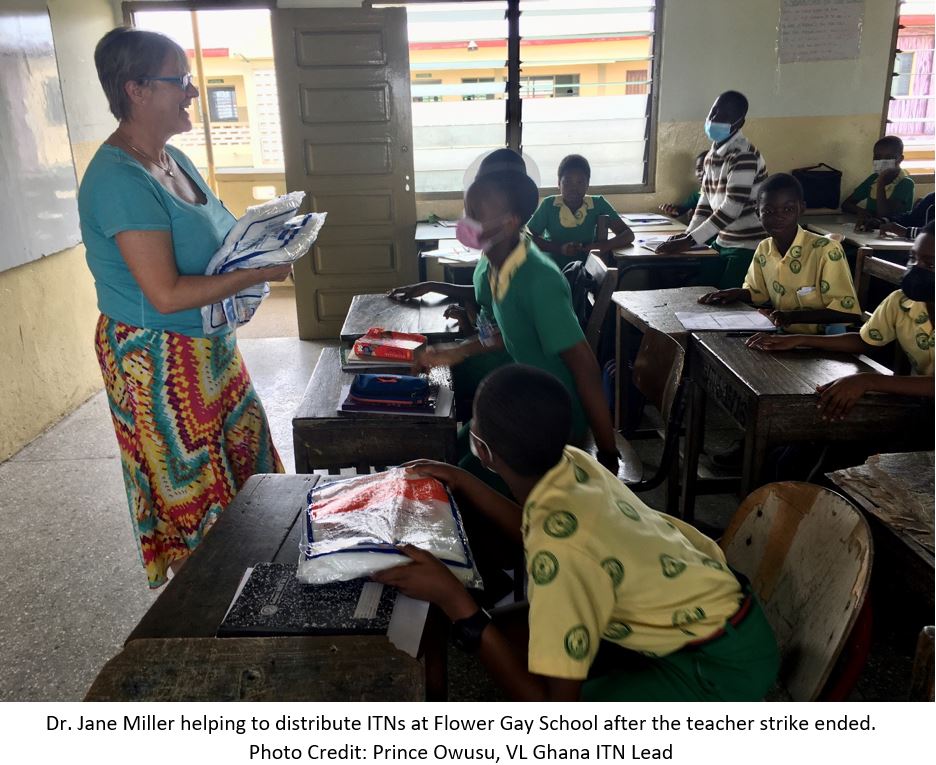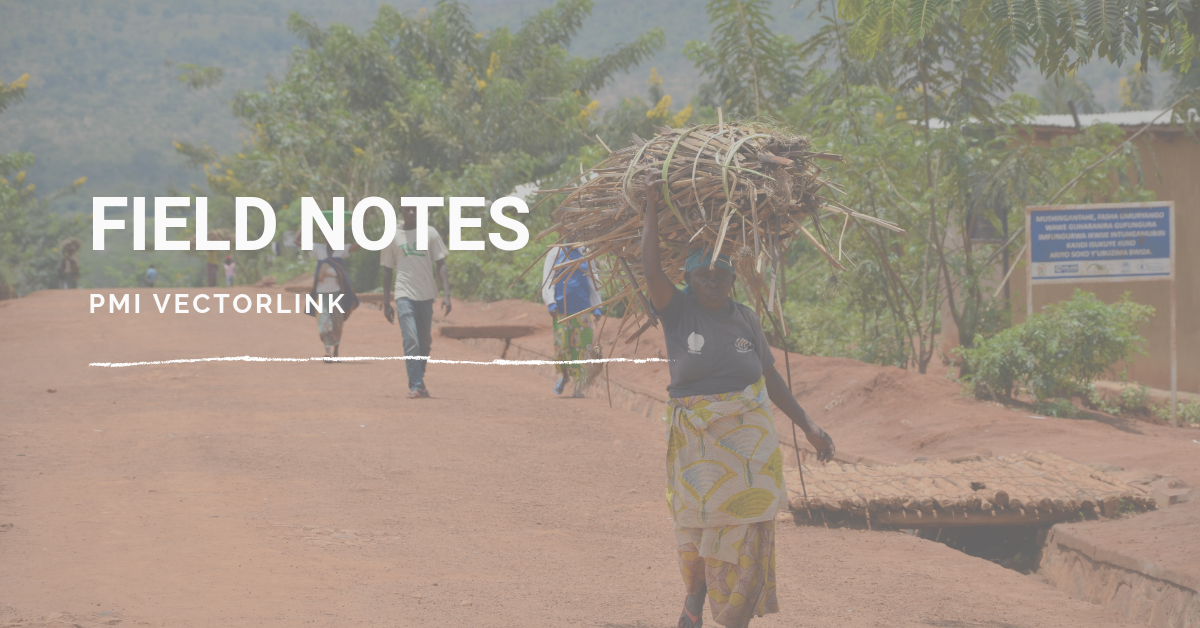How do you deliver ITNs through school-based distribution when public school teachers go on strike? This was the situation Prince Owusu and the VectorLink Ghana team found themselves in when a nationwide teacher strike occurred during the school-based distribution. This week’s Fist Bump goes to the VectorLink Ghana team for working through the strike to deliver over a million ITNs to pupils.

The National Malaria Control Program (NMCP), assisted by VectorLink Ghana and the School Health Education Program (SHEP), had planned to distribute 1,476,362 nets to primary school pupils in Year 2 (ages six and seven) and 6 (ages 11 and 12), but without teachers to distribute the nets, pupils had no way of getting them.
To enable the distribution to move forward, the NMCP and SHEP, with VL Ghana’s assistance, organized the distribution, ensuring the enrollment data was received, and monitored it. They also trained 3,331 regional and district officers from the Ghana Education Service and Ghana Health Service in distribution planning and management, and supervision, including the use of the Net4Schs app that records and reports the distribution data.
In rural and semi-urban areas, VL Ghana, the NMCP, and SHEP used community information centers to disseminate information on ITN availability and when pupils and parents could pick them up. In these areas, pupils still came to school as communication about the strike was delayed by two to three days. Forty-five percent of primary schools in Ghana are also private, so those pupils were still able to receive their ITNs.
Even with the strike, VL Ghana, the NMCP, and SHEP distributed over 1.4 million nets, protecting over 2.8 million people from malaria-carrying mosquitoes.
Excellent work ensuring pupils received their ITNs, VL Ghana!


